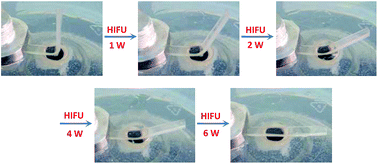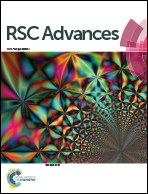Shape recovery characteristics for shape memory polymers subjected to high intensity focused ultrasound
Abstract
High intensity focused ultrasound (HIFU)-triggered shape memory has distinct features due to the unique heating mechanism based on polymer chain shearing and friction activated by ultrasonic energy. In this study we chose crosslinked poly(methyl methacrylate-co-butyl acrylate) P(MMA-BA) as a model polymer and studied in detail the HIFU induced thermal effect and shape recovery characteristics. It was found that HIFU heating for polymers is quick and spatially localized, and can be controlled by the ultrasound power, which allows for a spatiotemporally controllable shape memory process. The effects of various parameters including sample thickness, copolymer composition and crosslinker content on the HIFU-induced thermal effect and shape recovery were investigated. Under HIFU irradiation, there exists an optimum sample thickness for a maximum thermal effect and thus better shape recovery, which is different from conventional heating. Moreover, both the copolymer composition and the crosslinker content have a profound effect on the HIFU-induced temperature rise and thus the shape recovery. These effects can be related to changes in the viscoelastic parameter loss tangent (tan δ) of the copolymer around the glass transition temperature Tg that is the transition temperature for the shape recovery process.


 Please wait while we load your content...
Please wait while we load your content...